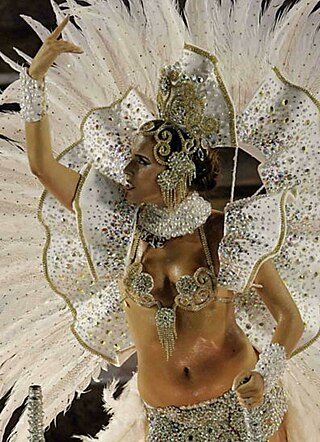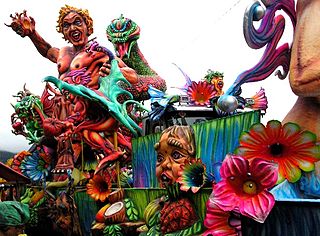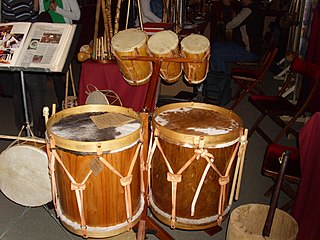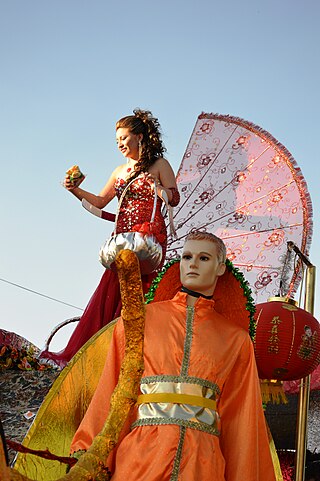
Carnival is a Western Christian festive season that occurs before the liturgical season of Lent. The main events typically occur during February or early March, during the period historically known as Shrovetide. Carnival typically involves public celebrations, including events such as parades, public street parties and other entertainments, combining some elements of a circus. Elaborate costumes and masks allow people to set aside their everyday individuality and experience a heightened sense of social unity. Participants often indulge in excessive consumption of alcohol, meat, and other foods that will be forgone during upcoming Lent. Traditionally, butter, milk, and other animal products were not consumed "excessively", rather, their stock was fully consumed during Shrovetide as to reduce waste. This festival is known for being a time of great indulgence before Lent, with drinking, overeating, and various other activities of indulgence being performed. For example, pancakes, donuts, and other desserts are prepared and eaten for a final time. During Lent, lacticinia and animal products are eaten less, and individuals make a Lenten sacrifice, thus giving up a certain object or activity of desire.

Santiago de Cuba is the second-largest city in Cuba and the capital city of Santiago de Cuba Province. It lies in the southeastern area of the island, some 870 km (540 mi) southeast of the Cuban capital of Havana.

Bongos are an Afro-Cuban percussion instrument consisting of a pair of small open bottomed hand drums of different sizes. The pair consists of the larger hembra and the smaller macho, which are joined by a wooden bridge. They are played with both hands and usually held between the legs, although in some cases, as in classical music, they may be played with sticks or mounted on stands.

The Carnival of Brazil is an annual festival held the Friday afternoon before Ash Wednesday at noon, which marks the beginning of Lent, the forty-day period before Easter. During Lent, Roman Catholics and some other Christians traditionally abstained from the consumption of meat and poultry, hence the term "carnival", from carnelevare, "to remove meat."
The term conga refers to the music groups within Cuban comparsas and the music they play. Comparsas are large ensembles of musicians, singers and dancers with a specific costume and choreography which perform in the street carnivals of Santiago de Cuba and Havana.

A samba school is a dancing, marching, and drumming club. They practice and often perform in a huge square-compounds and are devoted to practicing and exhibiting samba, an Afro-Brazilian dance and drumming style. Although the word "school" is in the name, samba schools do not offer instruction in a formal setting. Samba schools have a strong community basis and are traditionally associated with a particular neighborhood. They are often seen to affirm the cultural validity of the Afro-Brazilian heritage in contrast to the mainstream education system, and have evolved often in contrast to authoritarian development. The phrase "escola de samba" is popularly held to derive from the schoolyard location of the first group's early rehearsals. In Rio de Janeiro especially, they are mostly associated with poor neighborhoods ("favelas"). Samba and the samba school can be deeply interwoven with the daily lives of the shanty-town dwellers. Throughout the year the samba schools have various happenings and events, most important of which are rehearsals for the main event which is the yearly carnival parade. Each of the main schools spend many months each year designing the theme, holding a competition for their song, building the floats and rehearsing. It is overseen by a carnavalesco or carnival director. From 2005, some fourteen of the top samba schools in Rio have used a specially designed warehouse complex, the size of ten football pitches, called Samba City to build and house the elaborate floats. Each school's parade may consist of about 3,000 performers or more, and the preparations, especially producing the many different costumes, provide work for thousands of the poorest in Brazilian society. The resulting competition is a major economic and media event, with tens of thousands in the live audience and screened live to millions across South America.

Blacks and Whites' Carnival, is the largest and most important festival in south Colombia. Although its geographical indication belongs to the city of Pasto it has also been adopted by other municipalities in Nariño and the southwest of Colombia. It is celebrated from 2 to 7 January of each year and attracts a considerable number of Colombian and foreign tourists.

The Barranquilla's Carnival is one of Colombia's most important folkloric celebrations, and one of the biggest carnivals in the world. The carnival has traditions that date back to the 19th century. Four days before Lent, Barranquilla decks itself out to receive national and foreign tourists to join together with the city's inhabitants to enjoy four days of intense festivities. During the carnival, Barranquilla's normal activities are put aside as the city gets busy with street dances, musical and masquerade parades. The Carnival Of Barranquilla includes dances such as the Spanish paleo, African Congo, and indigenous mice y mica's. Many styles of Colombian music are also performed, most prominently cumbia, and instruments include drums and wind ensembles. The Carnival of Barranquilla was proclaimed a Cultural Masterpiece of the Nation by Colombia's National Congress in 2002. Also the UNESCO, in Paris on November 7, 2003, declared it one of the Masterpieces of the Oral and Intangible Heritage of Humanity, and it was during Olga Lucia Rodriquez Carnival Queen year.

Vejer de la Frontera is a Spanish hilltop town and municipality in the province of Cádiz, Andalusia, on the right bank of the river Barbate. The town of Vejer de la Frontera occupies a low hill overlooking the Straits of Gibraltar and surrounded by orchards and orange groves. It contains several ancient churches and convents, and the architecture of many of its houses recalls the period of Moorish rule, which lasted from 711 until the town was captured by Saint Ferdinand of Castile in 1248. Agriculture and fruit-farming are the chief industries; fighting bulls are also bred in the neighborhood and a running of the bulls is held annually.

Luciano Pozo González, known professionally as Chano Pozo, was a Cuban jazz percussionist, singer, dancer, and composer. Despite only living to age 33, he played a major role in the founding of Latin jazz. He co-wrote some of Dizzy Gillespie's Latin-flavored compositions, such as "Manteca" and "Tin Tin Deo", and was the first Latin percussionist in Gillespie's band. According to Rebeca Mauleón, "Few percussionists have played as integral a role in shaping Latin music as Luciano 'Chano' Pozo González".

The Carnival of Cádiz is one of the best-known carnivals in Spain. Its main characteristic is humor. Through sarcasm, mockery and irony, the main groups and the people of the street "purge" the most pressing problems of today. The whole city participates in the carnival for more than two weeks each year, and the presence of this fiesta is almost constant in the city because of the recitals and contests held throughout the year.
Carnivals, known as carnavales, charangas, or parrandas, have been vibrant public celebrations in Cuba since at least the 17th century, with the Carnaval of Santiago de Cuba holding a special place among Cubans.

The bombo criollo, or simply bombo, is a family of Latin American drums derived from the European bass drum and native Latin American drum traditions. These drums are of smaller dimensions than the orchestral bass drum, and their frame can be made of wood or steel. They can be held vertically or diagonally on the body or a stand. The specific make of the instrument depends on the regional tradition. In Argentina, the bombo criollo is called bombo legüero and played in many folkloric styles. In Cuba, bombos are the largest drums played by the street comparsas in Santiago. In other countries, the term tambora is commonly used.

The Carnival of Santa Cruz de Tenerife is held each February–March –depending on the year– in Santa Cruz de Tenerife, the capital of the largest island of the Canary Islands, Spain and attracts people from all over the world.
Carnival in Mexico is celebrated by about 225 communities in various ways, with the largest and best known modern celebrations occurring in Mazatlán and the city of Veracruz.

The Carnivals of Iztapalapa are various Carnival celebrations in the Mexico City borough of Iztapalapa. They are what remain of Carnival celebrations brought to Mexico City by the Spanish but subsequently suppressed by Inquisition authorities. There are individual celebrations in various communities, but for the close of Carnival, these communities come together for an event that can draw up to 200,000 people.

Carnival in French Guiana is a major event. Its style is described as Afro-Caribbean. A moveable holiday, it takes place between Epiphany and Ash Wednesday, ending on Mardi Gras. Known internationally for its Paré-masqué balls and its emblematic character, the Touloulou, it is considered the longest carnival in the world.
Alberto Zayas Govín was a Cuban rumba singer and songwriter who founded one of the first recorded rumba ensembles, Grupo Afrocubano Lulú Yonkori. He is considered one of the most important guaguancó vocalists/composers in the history of rumba.
The first African drums were heard in Cuba, since the 16th century, only during the celebration of certain feasts, such as the Día de Reyes and Carnestolendas or Carnival, because their use was restricted to some mutual aid societies, called "Cabildos de nación", where the slaves and their descendants were allowed to gather and practice their cultural and religious traditions.

















